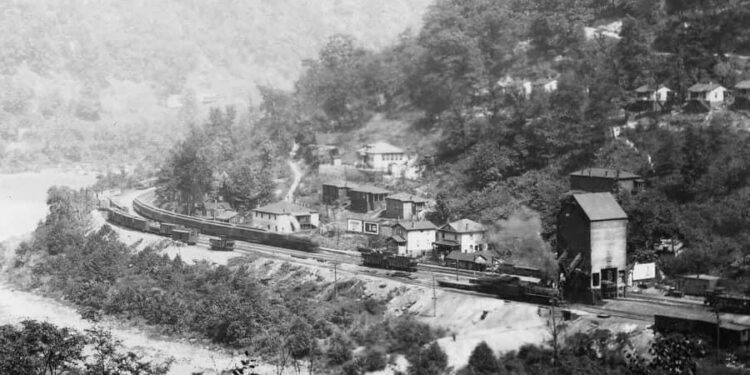WEST VIRGINIA (LOOTPRESS) – Today, many overlook Southern West Virginia and the importance it played during America’s Industrial Revolution. The once-booming towns that now sit quiet or that have been overtaken by nature were once home to some of the hardest-working people in the world who helped keep America moving.
Coal, once used as the fuel for steam locomotives, ships, steel mills, and so much more was known to be in West Virginia for over a century before the Civil War, but due to Southern West Virginia’s rough terrain, there was virtually no efficient way to extract major amounts of coal from the mountains to ship out to market.
After the Civil War, things began to change. With the completion of the Chesapeake and Ohio Railway in 1873 and the Norfolk and Western Railway in the 1880s, Southern West Virginia was finally being opened up to the rest of the nation.
The Chesapeake & Ohio Railway, completed near Hawks Nest in January of 1873 opened up the wild and untamed New River Gorge to the works of industry and soon thousands of people from all across the world flocked to the banks and hills of the New River to mine the coal, cut the timber, and fire up the coke ovens.
Multiple mining and lumber towns sprung up from each end of the Gorge from MacDougal in Fayette County to Glade in Raleigh County. Some of the finest virgin timber and coal were shipped out of the New River Gorge.
The famous “New River Smokeless Coal” caught the attention of industry leaders across the nation because of its low volatility and because it produced very little smoke when burned. Thanks to the C&O Railway, coal from the Gorge was quickly fueling the nation’s steel mills, locomotives, ships, and eventually power plants.
When coal gas and coal water are fused with carbon and the remaining ash, it forms a hard residue commonly referred to as coke. Coke was produced right in the New River Gorge in what is called coke ovens, and many towns built rows of them along the railway.
Many men manually operated these ovens which took vast amounts of physical labor. Men would load the coal into the ovens, allow the process to take place, and then manually load the coke into hoppers to be shipped to their destination via rail.
The town of Sewell had the most coke ovens in America at one point with 193 in operation at one time. Coke was mainly used as fuel in steel production. The steel created by using coke as fuel was used to construct the tall steel buildings that still make up America’s skyline today.
Coal from the New River Gorge was so popular that Henry Ford purchased the mining town of Nuttallburg and even visited the town in the 1920s.
Once the New River Gorge was busy, people looked to the most southern part of the state for a new area to extract coal from the widely untouched coalfields.
The completion of the Norfolk & Western Railway in the 1880s solved the problem, and soon coal became the railroad’s biggest revenue producer. The railroad-powered towns such as Welch and Matewan. Welch, at one point, was referred to as a little New York City as the city was lit up and cars were always moving through.
Later on, the Virginian Railway was completed from Deepwater, WV to Norfolk, VA in the early 1900s opening up even more access to the Southern West Virginia coalfields. The three major railroads along with the men who operated the locomotives, mined the coal, and cut the timber, kept West Virginia and the United States moving and progressing.
Eventually, demand slowed down and the advent of automobiles reduced the need for rail which soon led to people leaving the small West Virginia towns for more work and a better life.









